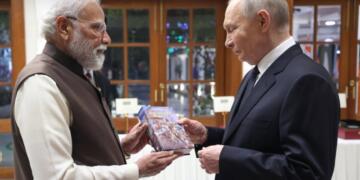India’s GDP growth coming in at 5 per cent for the June 2019 quarter, has re-started the “slowdown debate”, but amidst the slowdown in manufacturing and services, the good news is, the stupendous 8.6 per cent growth in electricity and power generation, versus a modest 4.3 per cent number in the March 2019 quarter. Also, trade, hotels & communication services recorded a solid 7.1 per cent growth versus a 6 per cent number in the preceding March quarter. The soft GDP growth figure was led by muted private final consumption expenditure,which only grew by 3.1 per cent. However, on the flip side, government expenditure provided the much needed cushion to growth and increased by an exceptionally robust 8.8 per cent.
Tepid auto sales have been the focus of the “growth debate”. While it is true that auto sales have seen a decline, one must be cognisant of the fact that India is not isolated in this case. USA, China and Japan too are just about emerging from the worst auto slow down in decades, thanks to mandatory compliance with BS-VI emission norms, that will take effect from 2020. In India, a ruling by the apex court in July 2018, making third party insurance for new car and two wheeler owners mandatory, further added to the soft demand for passenger vehicles.
However, those who use lacklustre auto sales to make their bearish case, fail to acknowledge that cement sales, a great lead indicator of an economy’s health, have been pretty healthy in the last eighteen months. Ambuja Cements Ltd, for instance, for the June 2019 quarter, reported a 51 per cent quarter on quarter (QoQ) and a 12 per cent year on year (YoY) growth in earnings before interest, tax, depreciation and amortisation (EBITDA) per tonne while ACC Ltd, another cement major, reported a 25 per cent rise in operating profit on account of better realisations and operational efficiencies, on the back of a good 7.8 per cent growth in net sales.
That the structural fabric of the Indian economy is in fine fettle, is further evident from the 30.6 growth in revenues and 11 per cent growth in the loan book of home loan giant, HDFC Ltd., for the June 2019 quarter, with the outstanding loan book at a solid Rs 4.16 lakh crore. The “slowdown” therefore is only cyclical and not, structural.
Modi government has in the last few days, rationalised the rules for foreign portfolio investors (FPIs), by doing away with the broad-based eligibility criteria, allowing offshore funds of mutual funds (MFs) and central banks that are not members of the Bank of International Settlements (BIS), to register as FPIs and, permitting FPIs to invest in unlisted non convertible debentures (NCDs) and more importantly, removing the contentious “Angel Tax” and “FPI Surcharge”.
Additionally, the decision to infuse upfront, Rs 70,000 crore, into public sector banks, to enable the release of Rs 5 lakh crore worth of liquidity in the market,making all pending GST refunds to MSMEs payable within 30 days, allowing additional 15 per cent depreciation on vehicles, lifting the ban on vehicle purchases by the government, tightening norms for credit rating agencies, a partial credit scheme for purchase of pooled assets of non-banking finance companies (NBFCs) and housing finance companies (HFCs), up to Rs 1 lakh crore and permitting NBFCs to use the Aadhaar authenticated bank ‘Know Your Customer’ (KYC), to avoid duplication, will go a long way in ensuring that the Modi juggernaut, effectively crystallises the roadmap towards the $5 trillion landmark, in the next five years.
Again, ensuring that banks link their loan products to RBI’s Repo rate, so that RBI’s rate cuts result in lower EMIs for borrowers and, extending additional liquidity support of Rs 20,000 crore to the National Housing Bank (NHB), to tackle the real estate sector’s sluggishness, besides the four consecutive Repo rate cuts to 5.4 per cent, to bring down real interest rates, should certainly help.
It also needs to be added here that while in July and August 2019, FPIs have roughly sold Indian shares worth $3.07 billion, they were net buyers of Indian shares worth $11.3 billion, between January-June 2019. Also, the recent selling by foreign investors is less due to local issues but largely driven by global risk aversion, thanks to negative bond yields, inverted yield curve in the U.S., a 0.1 and 0.2 per cent contraction in German and U.K. GDP figures for the June 2019 quarter, continuing trade war rhetoric between the US and China, protests in Hong Kong, escalating tensions between the UK and Iran and ofcourse, growing fears of a “No Deal Brexit”.
RBI’s decision on 26th August 2019, to transfer as “dividend and surplus”, roughly Rs 1.76 lakh crore to the government, on the basis of recommendations by the Bimal Jalan led panel,should also serve as a booster dose for both the equity and bond markets, going forward. The “realised equity range” mandated by the Jalan panel, has been set at 6.5-5.5 per cent of the RBI’s balance sheet. Since, as on 30th June 2019, the realised equity stood at 6.8 per cent, well above the lower floor of 5.5 per cent, the entire net income of the RBI was decided to be transferred to the government.
Hence, Modi naysayers who are sneering at the fact that the government has rewarded itself with a “windfall”, are clearly mistaken.The RBI Act of 1934 for instance, clearly mandates the RBI to transfer any available surplus after making adequate provisions for bad and doubtful debts, depreciation in assets, contribution to staff and the super-annuation fund, among others.
Speaking of reforms, the fact that “Modinomics” is not xenophobic and if anything, welcomes long term foreign capital, is evident from a slew of measures like allowing 100 per cent FDI in coal mining and contract manufacturing, approving 26 per cent overseas investment in digital media, relaxing the 30 per cent local sourcing norms for single-brand retail trading (SBRT) and ofcourse, permitting online sales without prior opening of brick and mortar stores, which will lead to the creation of jobs in logistics, digital payments, customer care,training and product skilling, going forward.
Last but not the least,the game changing bank mergers announced on 30th August 2019, fifty long years after former PM, Indira Gandhi, nationalised 14 major banks in July 1969, in a hopelessly debilitating move, will have far reaching ramifications. From 27 to 18 in 2017 and now whittling down the number of public sector banks (PSBs) to just 12, is not merely about finding synergies through consolidation. Size and scale matter in the banking business.The Modi government’s decision therefore to have only 12 large PSBs is great news, as it will suitably ring-fence these banks against potential systemic risks, raise their appetite for business and increase their lendable resources by growing their ability to raise funds at competitive rates.
To cut to the chase, reforms apart, since business sentiment and consumer confidence, in large part, are a function of liquidity, the Modi government has fired a few well meaning and absolutely well timed salvos. Foreign and domestic investors can certainly expect better tidings going forward, as this is a government that listens, absorbs, assimilates and acts, in a manner that is both business friendly and investor friendly.
Ms Sanju Verma is an Economist & Chief Spokesperson for BJP,Mumbai. She tweets @Sanju_Verma_





























